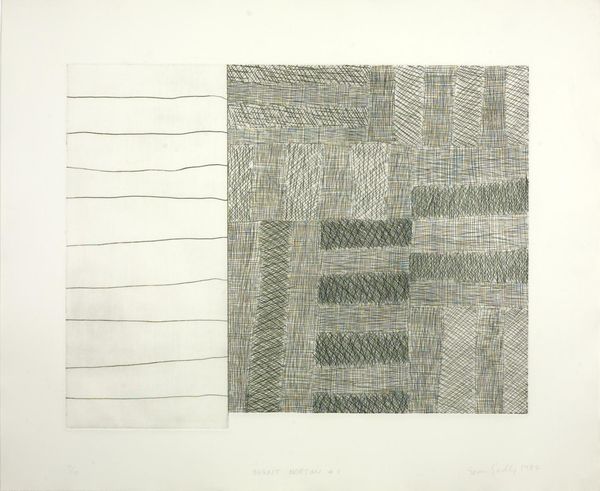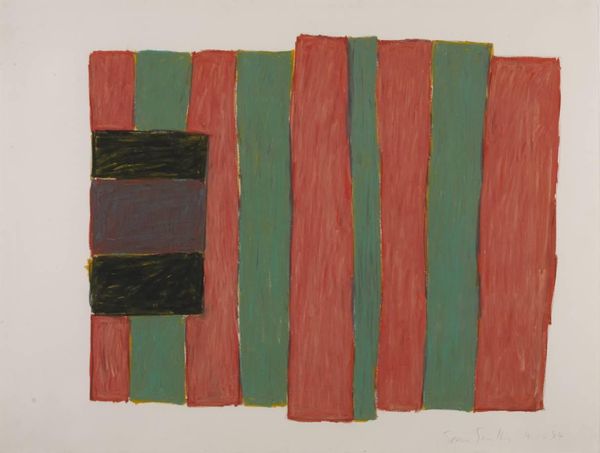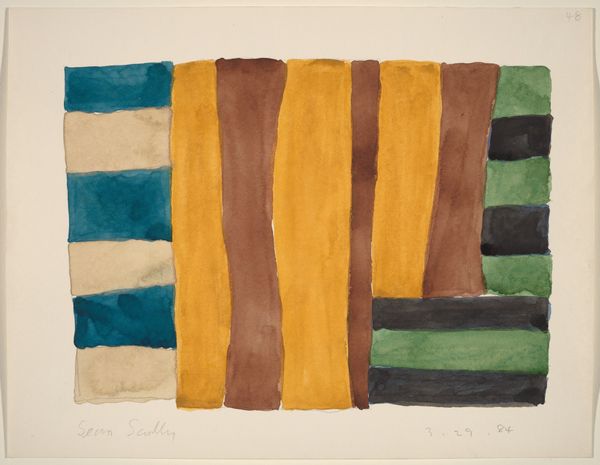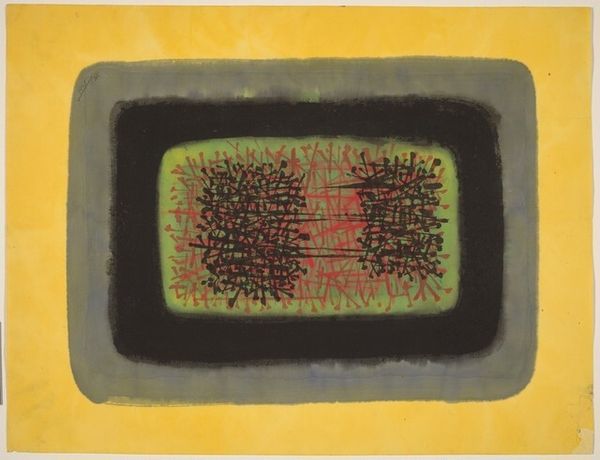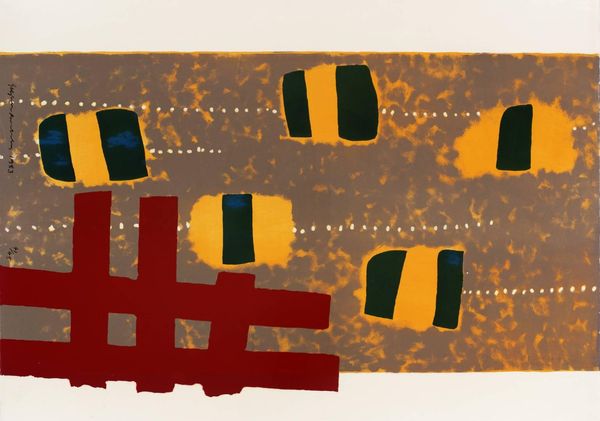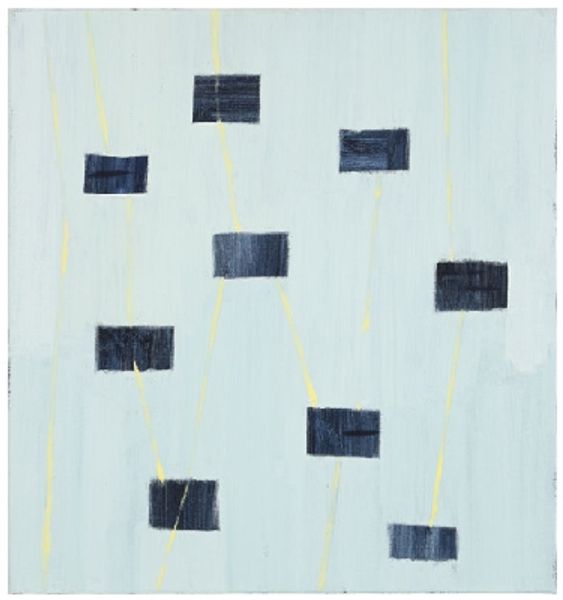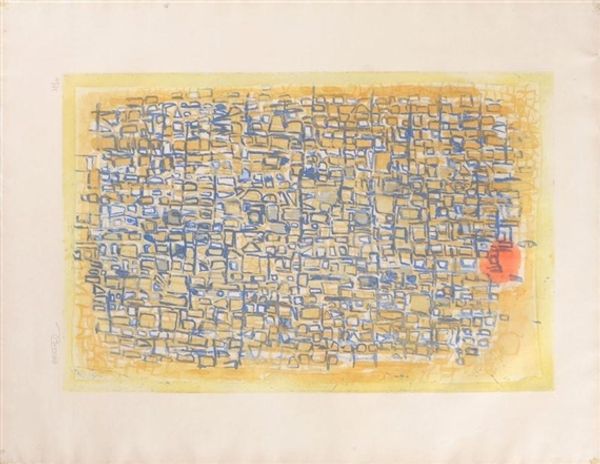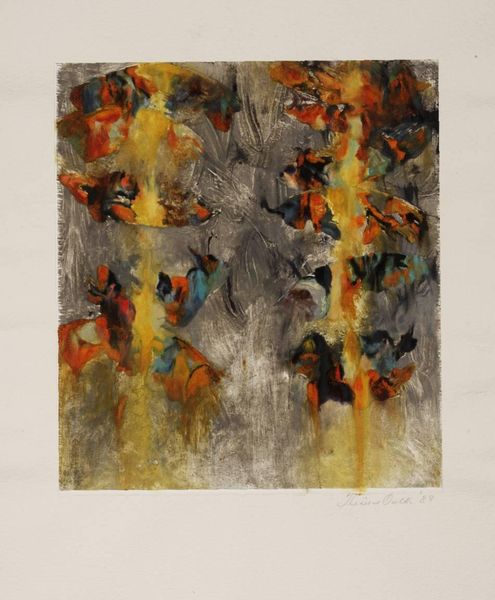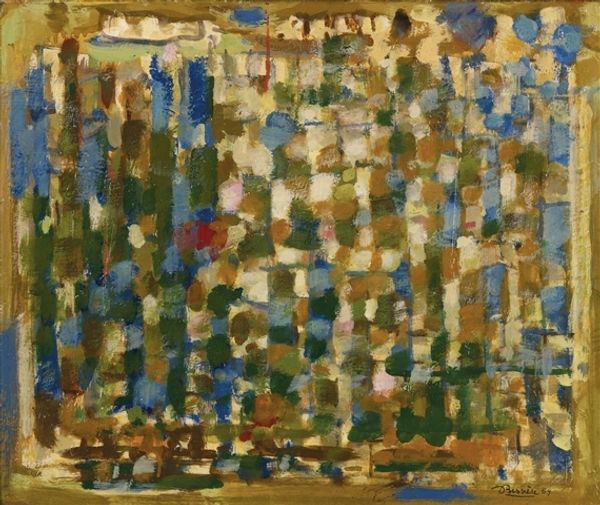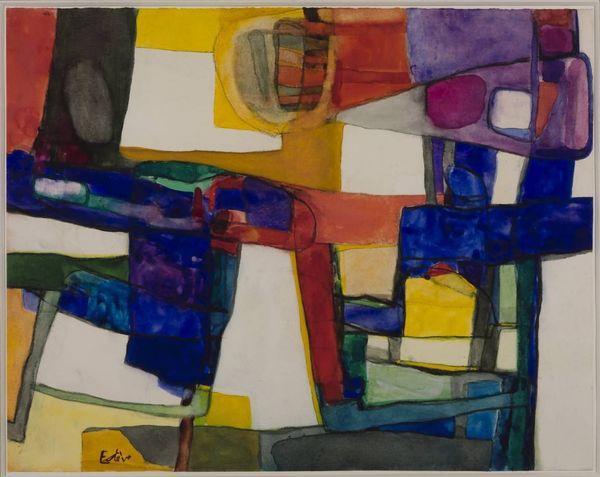
Dimensions: image: 282 x 400 mm
Copyright: © The estate of William Gear | CC-BY-NC-ND 4.0 DEED, Photo: Tate
Curator: This is "Trellis," a piece by William Gear. Editor: Immediately I'm struck by the sense of constraint, but with a glimmer of something golden breaking through. Curator: Gear, born in 1915, engaged with abstraction after the war, finding a visual language that reflected the shifting cultural landscape. He explored the grid throughout his career. Editor: Absolutely, and you see the grid here representing systems, the way society can confine, but the unexpected hues suggest hope. Is it about resisting those structures? Curator: It could be. His work often played with geometric forms, perhaps echoing the rebuilding of urban spaces at the time and the role of the individual within those spaces. Editor: It’s a powerful statement on the post-war world, a reflection of resilience and the persistent search for freedom within constraints. Curator: Yes, I agree. It's interesting to see how those social anxieties played out across his broader body of work. Editor: For me, thinking about this piece through the lens of social control helps me see the gold as a promise of change, a reminder of our agency.
Comments
Join the conversation
Join millions of artists and users on Artera today and experience the ultimate creative platform.
tate 6 months ago
⋮
Gear made this lithograph shortly after his return to London from Paris where he had lived from 1947 to 1950 and where he had been associated with the Cobra group of artists. Cobra artists had shared a common commitment to creative spontaneity, expressionist techniques, and vigorous subject matter. This work is typical of Gear's later work in which he moved away from his Cobra interests. Although there are strong suggestions of landscape in the use of colour and composition the subject is more general and has been described by the artist as 'a structure in the landscape'. Gallery label, August 2004

